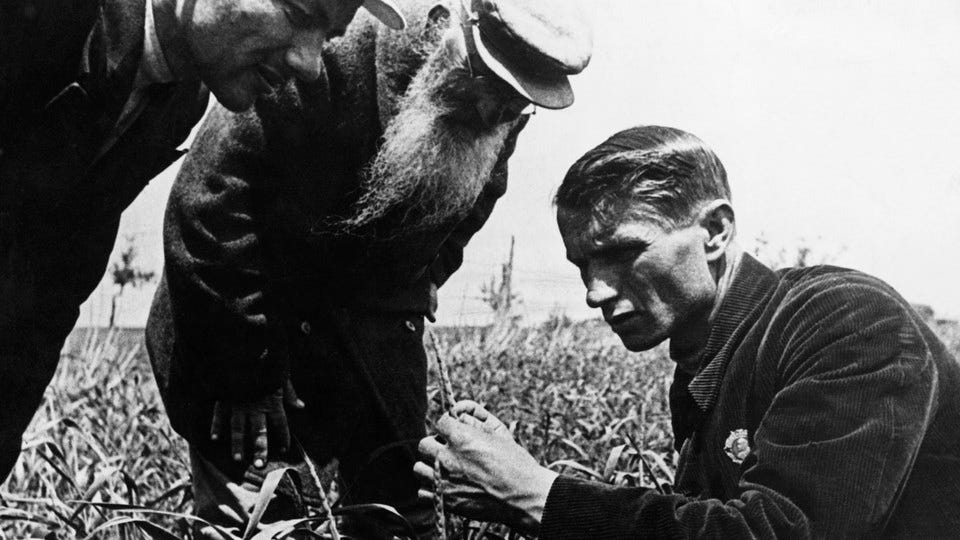How the Pseudoscience was Settled: Lysenko and the Art of Ideological Institutional Capture
Lessons on 'gender' from the history of Soviet 'science'
Image curation was a major concern for the Soviets. Despite a vast censorship bureaucracy, however, truths still got out of the Soviet Union in the form of official photography. Truth could appear as informed commentary on the official caption. When Robert C. Cook published the above photo in a 1949 issue of The Journal of Heredity devoted to “the genetics controversy” in the USSR, he included a tongue-in-cheek comment. “It is noteworthy that Lysenko, who has interdicted experimental controls and the use of mathematics in biological research, needs only eye-power and general impressions to ‘measure the growth of wheat,’” Cook explained. “The presence of that capitalist symbol, Santa Claus, in the center of the picture is purely coincidental.”
Contrary to popular framing, Trofim Denisovich Lysenko did not personally starve millions of people to death, nor was he personally responsible for Stalin’s purges, which included people in his own orbit. Rather, Lysenko’s impact on Soviet and Mao…




